After 3 long years, the EAS Congress is up and running as a hybrid meeting with over 2300 delegates, nearly 1400 onsite. The next 3 days will highlight the latest news from the EAS Familial Hypercholesterolaemia Studies Collaboration (FHSC), key collaborative sessions with the European Society of Cardiology, International Atherosclerosis Society, the US National Lipid Association, and roundtables with the World Heart Federation. Not to mention, novel insights from both clinical and basic atherosclerosis research in two Late Breaker Sessions.
One of the premier events of EAS Congress is the Anitschkow Lecture. This year’s recipient, Professor Børge G. Nordestgaard (The Copenhagen General Population Study and Copenhagen University Hospital, Denmark), discussed how thinking about remnant cholesterol as a cardiovascular risk factor has evolved over the last 30 years.
Professor Nordestgaard’s interest in triglyceride-rich lipoproteins (TRL) and remnant cholesterol date from the 1980s. Preclinical studies showed that lipoprotein diameter was a major determinant of the propensity to develop atherosclerosis in vivo. Notably, diabetic cholesterol-fed rabbits with elevated triglyceride (TG) levels were protected against atherogenesis as large chylomicron lipoproteins carrying plasma cholesterol were not able to enter the artery wall.1 However, the ability of remnant lipoproteins to traverse the arterial wall was unclear. This uncertainty was resolved in later studies, which confirmed that TRL lipoproteins – including remnant lipoproteins – enter and are selectively retained in the arterial wall.2 This finding was also in agreement with clinical evidence that remnant hyperlipidaemia was associated with accelerated atherosclerotic cardiovascular disease (ASCVD).
Genetic studies dating from the late 1990s were pivotal to moving the field forward. In one meta-analysis, individuals heterozygous for mutations in the lipoprotein lipase gene, a key regulator of TRL metabolism, not only had higher plasma TG levels (a surrogate for TRL and remnant lipoproteins) but were also at increased risk for ischaemic heart disease.3 A follow-up study almost 20 years later showed that carriage of variants in the gene encoding lipoprotein lipase had higher remnant cholesterol levels and nearly 2-fold higher (odds ratio 1.84) higher risk for coronary artery disease.4
While low-density lipoprotein cholesterol (LDL-C) is indisputably the primary clinical focus of cardiovascular disease prevention,5 even at low LDL-C levels, high-risk patients have a persistent residual risk of cardiovascular events. With large outcomes studies failing to show that high-density lipoprotein was associated with cardiovascular risk, attention refocused on the role of TRL and remnant cholesterol.6 Large observational studies founded by Professor Nordestgaard and Professor Tybjaerg-Hansen (a previous Anitschkow Award recipient) and colleagues, notably the Copenhagen City Heart Study (N=15,000) and the Copenhagen General Population Study (>110,000), both with extended follow-up, have been instrumental to this. In 2007, analyses using these data showed that moderately elevated TG levels (≥3 mmol/L or ~≥260 mg/dL),7 and more recently, for remnant cholesterol,8,9 were associated with increased risk for myocardial infarction, ischaemic heart disease, stroke, and all-cause mortality. Indeed, since 2008, there has been an explosion in the literature surrounding remnant cholesterol.
Critical to the rising focus of TRL and remnants in atherosclerotic cardiovascular disease prevention has been the use of Mendelian randomization studies. These show that elevated remnant cholesterol concentration was causal for ischaemic heart disease.8 Subsequent studies focusing on critical proteins involved in the regulation of TRL metabolism, such as apolipoprotein (apo) CIII,10 and angiopoietin like proteins 3 and 4,11,12 provide further support that TG-rich remnant lipoproteins cause cardiovascular disease, independent of HDL-C and LDL-C. Evidence from clinical studies strengthen the case for elevated TRL and remnant cholesterol, as a contributor to residual cardiovascular and mortality risk.13 In the general population, elevated remnant cholesterol was also associated with increased risk for peripheral artery disease.14
Why is this important? Because elevated TRL and remnant cholesterol are increasingly prevalent, aligning with escalating rates of obesity and type 2 diabetes mellitus. Already in 2014, data from the Copenhagen General Population Study, showed that 27% – more than one in four – people had mild to moderate hypertriglyceridaemia,15 and prevalence was higher in high-risk individuals. Remnant cholesterol, together with LDL-C, are key components of non-HDL-C, an important guideline-recommended lipid target for cardiovascular disease prevention, especially among individuals with insulin resistant conditions such as type 2 diabetes.5
In 2019, the European Society of Cardiology/EAS Dyslipidaemia Guidelines recognised elevated TG levels as a cardiovascular risk factor.5 Lifestyle intervention (eat less, exercise more, drink less alcohol) is fundamental to the management of moderate hypertriglyceridaemia, with pharmacotherapeutic options (after high-intensity statin) including icosapent ethyl and fibrates. Driven by genetics, the last 10 years has prompted re-evaluation of the role of elevated TRL and remnant cholesterol in cardiovascular disease prevention. Novel TG-lowering agents are now in clinical development and will offer new options in the future.
References
1. Nordestgaard BG, Zilversmit DB. J Lipid Res 1988;29:1491-1500.
2. Nordestgaard BG, Wootton R, Lewis B. Arterioscler Thromb Vasc Biol 1995;15:534-542.
3. Wittrup HH, Tybjaerg-Hansen A, Nordestgaard BG. Circulation 1999;99:2901-2907.
4. Khera AV, Won HH, Peloso GM, et al. JAMA 2017 7;317:937-946.
5. Mach F, Baigent C, Catapano AL, et al. Eur Heart J 2020;41:111-188.
6. Nordestgaard BG. Circ Res 2016;118:547-563.
7. Nordestgaard BG, Benn M, Schnohr P, Tybjaerg-Hansen A. JAMA 2007;298:299-308.
8. Varbo A, Benn M, Tybjærg-Hansen A, et al. J Am Coll Cardiol 2013;61:427-436.
9. Varbo A, Nordestgaard BG. Ann Neurol 2019;85:550-559.
10. Jørgensen AB, Frikke-Schmidt R, Nordestgaard BG, Tybjærg-Hansen A. N Engl J Med 2014;371:32-41.
11. Dewey FE, Gusarova V, Dunbar RL, et al. N Engl J Med 2017;377:211-221.
12. Dewey FE, Gusarova V, O’Dushlaine C, et al. N Engl J Med 2016;374:1123-1133.
13. Vallejo-Vaz AJ et al. Circulation 2018;138:770-781.
14. Wadström BN, Wulff AB, Pedersen KM, et al. Eur Heart J 2021 Oct 18; doi: 10.1093/eurheartj/ehab705.
15. Nordestgaard BG, Varbo A. Lancet 2014;384:626-635.

